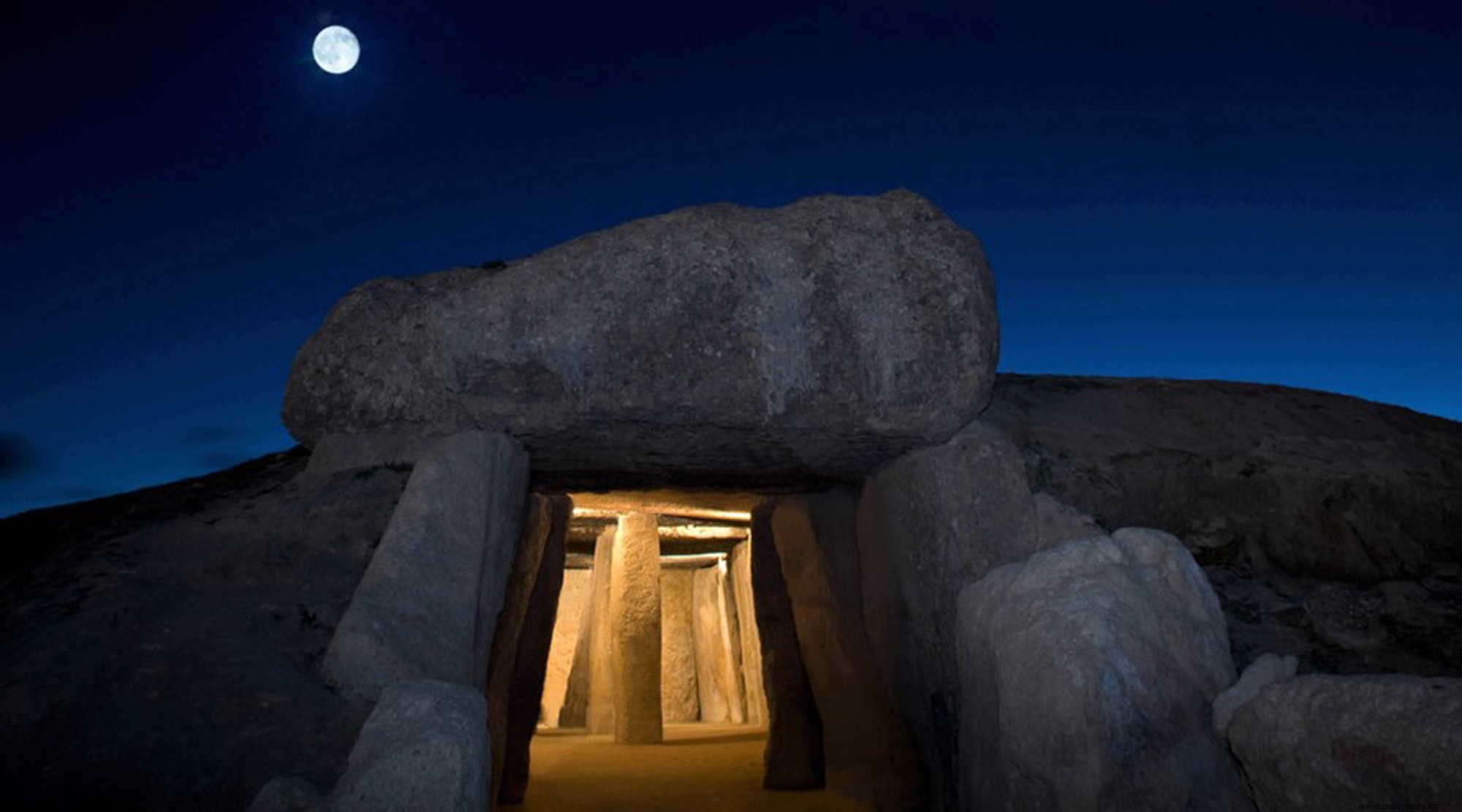
The word itself that comes from the Greek defines what that we are going to talk; mega (large) and lithos (stone). In other words, all the architectural constructions that use large stone blocks can be pigeonholed here, from the Egyptian or Mayan pyramids, to the cyclopean enclosures of the Mycenaean culture. But today, this word is limited to the oldest monumental architecture that appeared during prehistory.
We can also add that, despite the fact that the first studies indicated a Mediterranean origin for these constructions, in the great Egyptian or Greek cultures. Today, thanks to the new dates of C14, it is known that they had their origin in Western Europe, where we find a special role for the Iberian Peninsula.
Your constructors.
To get to know them a little better we must go to the end of the Epipaleolithic or the peninsular Mesolithic, and knowing how these constructions is the definitive step towards the Neolithic. If we look at the dates of C14, currently the oldest in the Peninsula belong to the Atlantic coast of Portugal, where they even date back to 4,700 years BC. That is to say, at the end of the culture of the Portuguese shell middens.
If the arrival of the Neolithic brings with it sedentarization As one of its main characteristics, Megalithism is the archaeological remains that best represents it. The effort, the time and the work, without forgetting the technical complexity of these constructions, are the greatest symptom that the first men and women who practiced agriculture and livestock did not intend to move from the site. In addition to being a true symbol of territorial marker , by which they made it very clear that those lands belonged to someone, to exploit them economically at the service of the community.
But Megalithism does not only transmit sedentarization, but we can deduce from its construction aspects such as the first social differences . Said constructions are difficult to carry out if there is no one, from the one who projects them, to the one who structures the work, which sometimes included the displacement of stones that passed several tons, hundreds of kilometers away. In the same way, that some authors such as Robert Chapman, see in the first construction of megalithic tombs a prize for the leaders and founders of these new Neolithic communities.
Another interesting aspect is its usefulness, since the different types of constructions that we will see below carry an eminently religious aspect. . From places of worship, to community gathering places and especially a site to bury their dead. With Megalithism, the necropolis concept was born for the first time, this carries with it a clear separation of the world of the living from that of the dead. Their use shows us once again their clear determination of sedentarization, in short, they were reused for thousands of years, even until the arrival of the metallurgical communities.
Distribution throughout the Iberian Peninsula and its main examples.
Without further delay we will see some examples that will help us to better understand these megalithic constructions of the Iberian Peninsula. Not without first making a couple of paragraphs; The first of these is to appreciate that most of these constructions are peripheral, that is, very few of them have been found in the interior of the peninsula. In addition, those found mainly in the northern plateau, from Salamanca to Burgos, are usually assigned some type of connection with the Portuguese or those of the Cantabrian Sea. A second important aspect is the essentially funerary use of these constructions in the Iberian Peninsula, with few exceptions in Portugal and Catalonia of mehirs and cromlechs.
Portugal.
Undoubtedly one of the most interesting geographical spaces to learn about Iberian Megalithism. It should be noted that thousands of these constructions have been located on its Atlantic façade from north to south, from simple menhirs to complex burial chambers. Despite being able to find them throughout the country, two regions take the cake; The Alentejo and the Algarve. Remember as has been pointed out that they are the oldest in the Iberian Peninsula, with more than 6,700 years of history. Of all of them, due to their uniqueness, I present these two, and I invite you to visit this web page:portugalnummapa
Crómlech de los Almendros.
To locate it, we will go to the center of the Portuguese country, halfway between the cities of Badajoz and Lisbon. There we will find one of the most original constructions of the Peninsula. It is a large circle of menhirs, of which about a hundred can still be seen.
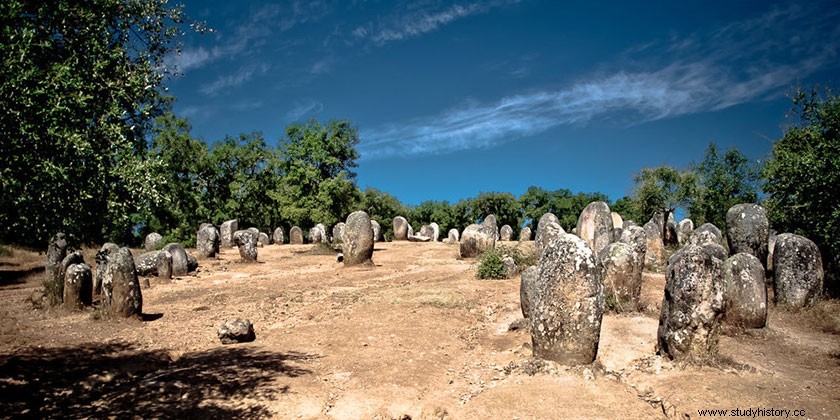
After being discovered in the 1960s, its dating has revealed that it is long before the construction of the famous Stonehenge. Some venture to confirm that it began in 6,000 BC, to be completed with the arrival of Megalithism in the V millennium BC. The truth is that it seems to be a temple since a dirt road reached it, without a doubt it could be a place of pilgrimage or community meeting. It is more complicated to enter into the interpretations about its possible astronomical significance, but its orientation with the king star becomes evident.
Zambujeiro Elk.
We do not have to walk far to know the next of these constructions. Just 10 km away we find one of the most important dolmens in the Iberian Peninsula, it should be noted that "anta" is the Portuguese name for this type of megalithic construction.
It was built around 3,000 BC. Its enormous dimensions, up to 6 m. of interior height, they take you to a privileged place to know this type of constructions in the Peninsula. Inside there is a room that serves as a funerary chamber covered by large slabs, which are supported by seven large vertical stones. To reach it there was a 15 m long corridor. also covered especially in its last stretch.
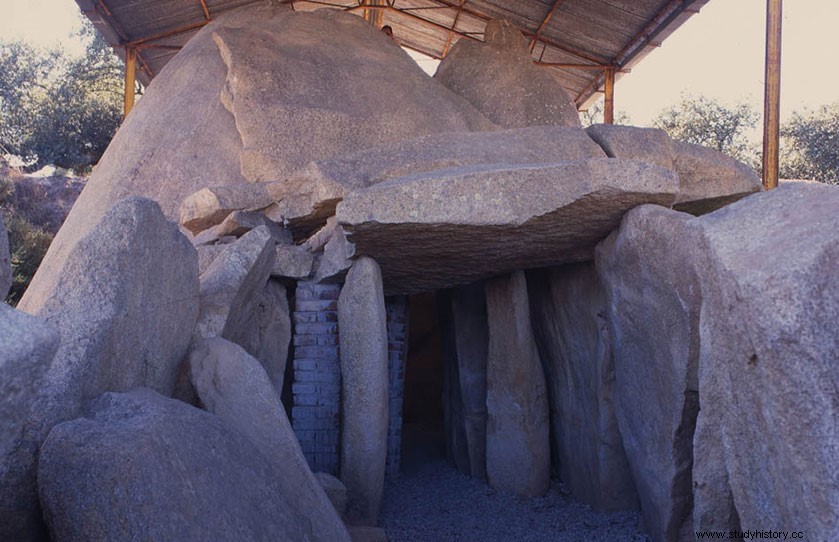
Highlight that the use of these spaces was not for a restricted time. But the deposits of the deceased were made in some cases over thousands of years, to place the last individuals, the oldest remains were placed next to their belongings. In addition to signifying that in these places farewell rites were carried out for the deceased, this is deduced from the encounter of fire or ocher in these rooms.
Galicia and Cantabrian Coast.
Throughout the north of the peninsula, from Galicia to Navarra, a large number of these constructions have been located, especially with funerary functions. Also noteworthy is the significant number of them with engravings and signs that continue to influence the issue of territoriality.
The oldest belong to approximately 4,300 BC, that is, a few centuries after the start of these constructions in Portugal, but with great similarity to the latter.
Dombate Dolmen.
To find the most significant construction in this area, we must go to the Coruña town of Cabaña de Bergantiños, located about 60 km from the capital. It is a very similar dolmen to the one described in Zambujerio, but smaller in size. His height was about 1.80 m. and curiously, its cover was supported by seven large stones. It is difficult to determine if this number meant something to the Neolithic inhabitants, but this amount has been found in several apart from Dombate and the one described above.
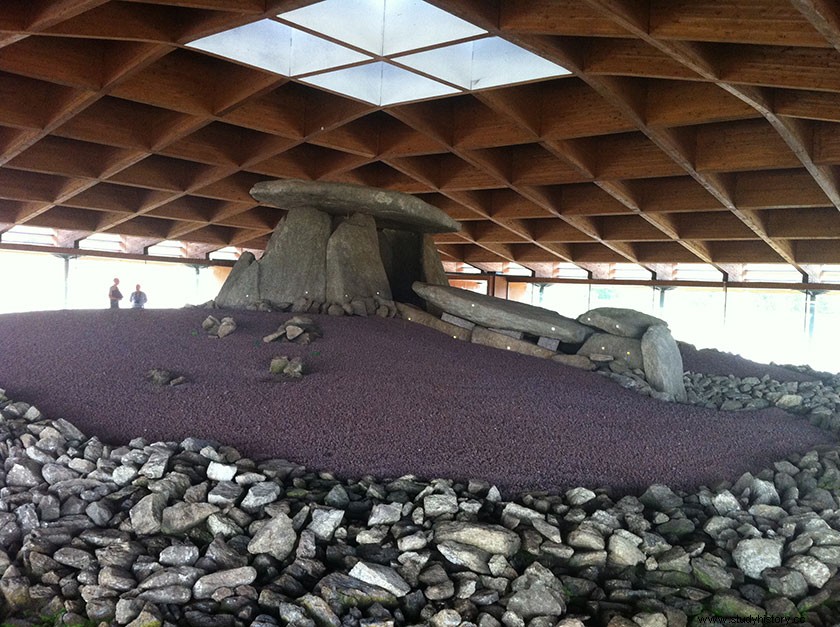
His study of it has revealed interesting aspects, such as the theme of the engravings, since many of the slabs had this type of ornamentation. On the other hand, the curious intervals of its use, since its first construction dates back to the year 3,800 BC. A thousand years later, it was completed with access through the corridor and a large slab that served as a door. Lastly, it should be noted that during the Bell Beaker culture, that is to say around the year 2,000 BC, its use was complete, only to be progressively abandoned after the disappearance of said culture.
Andalusia.
According to recent studies, more than 1,500 megalithic constructions have been cataloged in the Andalusian community. Curiously, the greatest concentration is found at both ends, the provinces of Almería, Granada and Huelva, but the most spectacular of all and which serves as the cover of this article is found in the province of Málaga.
Antequera Dolmens Archaeological Ensemble.
Name adopted in 2016, after being declared a World Heritage Site. It is a museum area in the surroundings of the Malaga city of Antequera. Specifically, it is a series of sites that go from the Neolithic, their oldest dating back to the year 4,500 BC, to the various stages of recent prehistory. The most important are the following.
Menga Dolmen.
Undoubtedly, for experts on the subject, one of the most impressive and peculiar megalithic constructions in all of Europe. Its construction took place about 5,700 years ago. It is a huge corridor tomb, which contains some of the most interesting construction solutions in Europe, about which various conjectures continue to be unleashed.
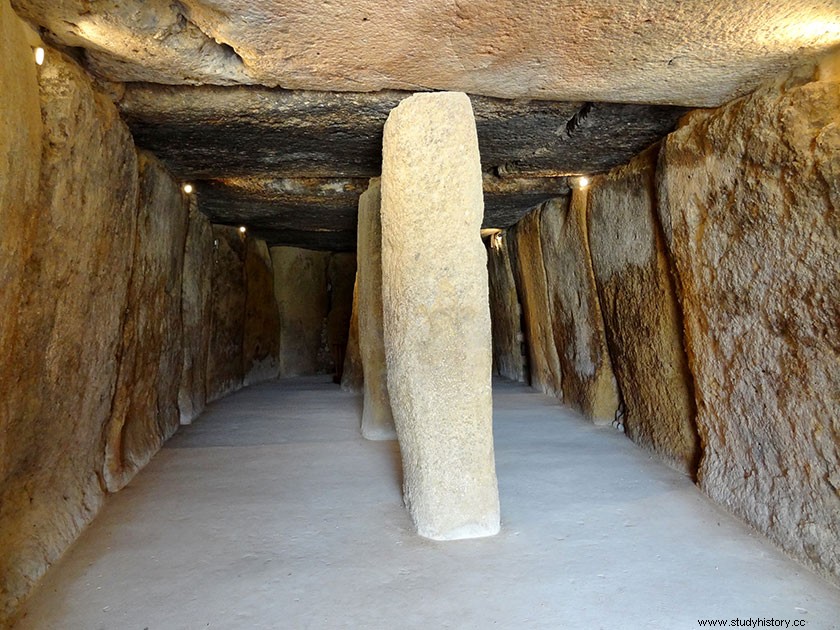
It is distributed in three parts, an atrium that acts as a hall and that some classify as another part of the corridor that gives access to the great burial chamber. Several aspects of it draw attention, such as the three central and aligned pillars, which are unique in the megalithic world, and which support the enormous slabs of the roof with an approximate weight of 120 tons, a fact that reveals the enormous amount of people who had to work on its construction.
Other interesting aspects are a dead well inside, with a depth of about 20 m. that its usefulness is unknown, or the unknown of its orientation as opposed to sunrise.
Viera Dolmen.
Smaller than the previous one and discovered by the Viera brothers at the beginning of the 20th century. It is also a corridor tomb, although smaller in size than the Dolmen of Menga, unlike the latter its orientation with respect to the sun, which is usual in this type of construction. In other words, during the spring and autumn equinoxes, the sun enters the bottom of the burial chamber. Its construction was later than its companion and therefore it is speculated that it could have been by a community with different religious customs.
El Romeral Dolmen.
In this case we are faced with a new tomb of a corridor, which has been located about two kilometers from the previous ones. Discovered by the same beautiful Viera at the beginning of the 20th century. Among its peculiarities, the double funerary chamber and its orientation towards the nearby Sierra del Torcal stand out. This fact generates speculations of different religious reasons when building these funerary deposits. Finally, it should be noted that its dating resulted in it being the last of the three to be built, even speculating that its promoters belonged to the first metallurgical cultures.
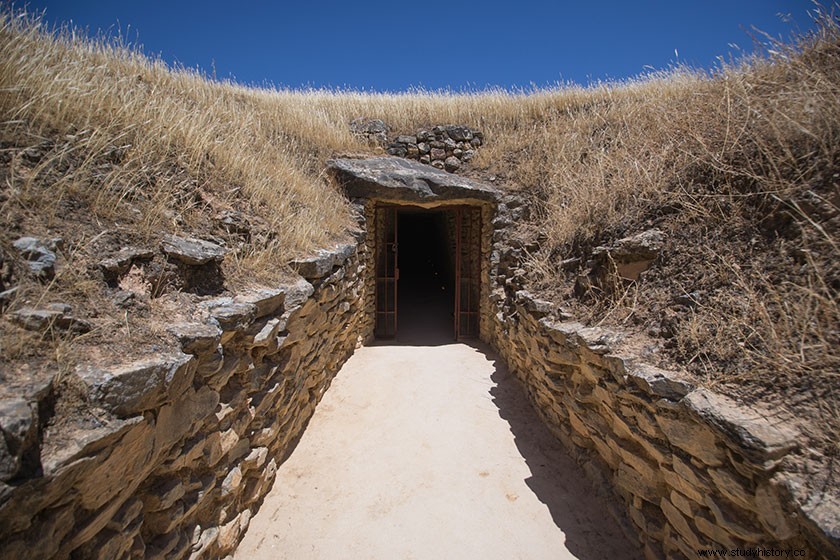
Catalonia.
In the area of Catalonia we find a geographical aspect that has drawn attention, it is the border line of the river Llobregat, for some unknown circumstance there is practically no representation to the south of said river. On the other hand, some remains found that we will describe below have provided information on trans-Pyrenean cultural contacts.
Megalithic set of Roses.
Located in the north of the province of Girona and next to the sea we find this popular coastal city. Next to it, on the mountain that dominates the bay, a spectacular walk of little difficulty takes us to see different megalithic constructions, including dolmens, menhirs and funerary cists.
Of all of them, the most important in terms of size and conservation is the Dolmen de la Creu d’en Cobertella , also note that it is the largest in all of Catalonia. This corridor tomb dated approximately to the year 3,000 BC, has interior dimensions of 5 m. long and more than 2 m. Tall. Its roof is a large slab weighing more than 4 tons.

As a novelty, it should be noted that there are two menhirs, (menhirs of the Casa Cremada ) with an approximate height of 2.40 m. As has been said, this type of megalithic construction, by the way the simplest, is not very common within the peninsula.
Reguers de Seró archaeological site.
We leave for the end one of the possibly most unknown groups, but without a doubt the most curious of the Peninsula. Discovered in 2007 while construction work was being carried out on an irrigation canal. Note that one of the machines that worked on it ran into some large stone slabs.
After the different archaeological investigations, it was considered that its last use was as a great funerary cist from the 3rd millennium BC, used therefore by the so-called Beaker cultures. But what caught the most attention were the engraved decorations that the monoliths had, after various investigations it was found that they had been reused. Thus, it was ruled that its first use was as two large stelae, the largest of which was more than 5 m. Tall. Possibly they were a great territorial marker, but what is more curious is their link with others closer to the Catalan pre-Pyrenees, and with others located on the other side of the Pyrenees. It is certainly a symptom of some kind of cultural or even religious contact.
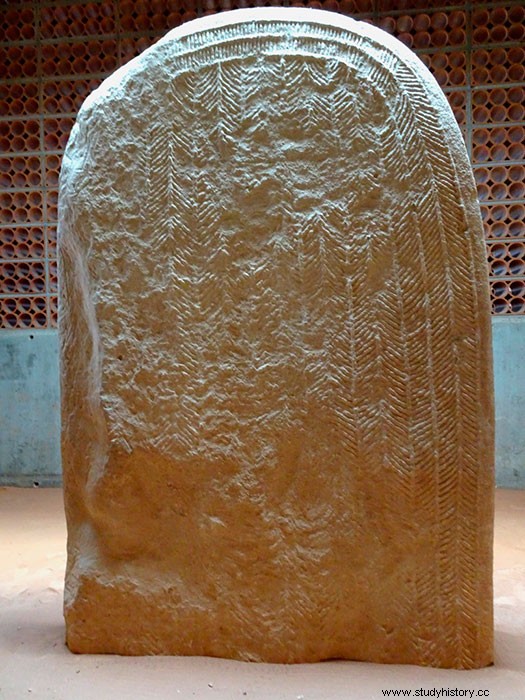
Today the steles can be seen in the “Seró espai Trasmissor” museum located near the Lleida municipality of Artesa de Segre. Also directed by a great friend and best professional, Xavi Bermúdez. His visit will not leave you indifferent, I invite you to get to know him better on his website:museucn
Any list of this type is subject to different interpretations, surely you will want to contribute some more, I invite you to do so in the comments section.
Today we invite you to read this article closely related to the topic:
More info:
Recent prehistory of the Iberian Peninsula, Coor. Mario Menéndez, Ed. Uned, 2013
Images:commons.wikimedia
Cover image:javierperezgonzalez
